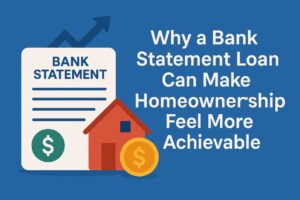In the ever-evolving world of digital finance, convenience is king. Online shopping, digital banking, and electronic payments have transformed how we handle our money, offering a seamless and efficient way to make purchases and transfer funds. However, along with the advantages of a digital-first world, there are also risks. One such risk involves underground platforms where cybercriminals can exchange stolen financial information. One of these platforms is referred to as PatrickStash, a place where criminals buy and sell stolen card details, making it a significant concern for both individuals and businesses alike.
In this post, we’ll explore what PatrickStash is, what “dumps” and “CVV2” codes mean, and how these underground marketplaces pose a threat to your financial security. By understanding these terms and their implications, you’ll be better prepared to protect yourself from financial fraud.
Table of Contents
ToggleWhat Is PatrickStash?
PatrickStash refers to an underground marketplace where criminals trade stolen financial data, including credit card numbers, bank account information, and sensitive personal details. This platform is a hub for cybercriminals to buy and sell card data that has been illegally obtained.
A typical transaction on these platforms involves the sale of dumps (the data from a credit card’s magnetic stripe) and CVV2 codes (the three-digit security code on the back of credit cards). These stolen pieces of information are then used by fraudsters to make unauthorized purchases, withdraw money from ATMs, or even engage in identity theft.
While PatrickStash may sound like a niche issue, the reality is that it plays a significant role in the world of cybercrime. It provides a relatively anonymous and efficient way for criminals to monetize stolen data, leading to financial losses for the victims and posing a challenge for law enforcement agencies.
What Are Dumps?
The term “dump” refers to the information stored on the magnetic stripe of a credit or debit card. When you swipe your card at an ATM or a point-of-sale terminal, the system reads the data stored on this stripe to complete the transaction. The data contained in a dump typically includes:
-
Primary Account Number (PAN): The unique number assigned to the cardholder’s account.
-
Expiration Date: The date when the card will no longer be valid.
-
Service Code: A number that indicates the type of card and its capabilities.
-
Cardholder’s Name: Some dumps may also include the name of the person to whom the card is issued.
Criminals gain access to this information using various methods, such as card skimming devices, malware, or phishing attacks. Once they have the data, they can clone the card or use the information to make fraudulent purchases.
PatrickStash and similar marketplaces allow criminals to upload this stolen data, which is then bought by other fraudsters who use it to carry out illegal transactions. The selling of dumps has become one of the most common methods for cybercriminals to profit from stolen financial data.
What Is CVV2 and How Does It Impact You?
Another crucial piece of stolen data that is traded on platforms like PatrickStash is the CVV2 code. CVV2 stands for Card Verification Value 2, which is a three-digit number found on the back of most credit and debit cards. This code is used as an added layer of security for online transactions. When you make an online purchase, you’re usually asked to provide the CVV2 code to confirm that you have the physical card in hand.
For criminals, CVV2 codes are incredibly valuable because they allow them to carry out online fraud without needing the physical card. When CVV2 codes are stolen, they can be used to make fraudulent online purchases. This makes it easier for criminals to exploit stolen data and avoid being caught, as online transactions typically don’t require the physical presence of the card.
Once a fraudster has access to the stolen data and the CVV2 code, they can begin making purchases from online retailers, often without the victim realizing their information has been compromised. This is why PatrickStash and similar platforms are a significant concern for anyone who shops or makes transactions online.
How Does PatrickStash Operate?
Now that we understand what PatrickStash is and the types of data sold on the platform, let’s dive into how these underground markets operate. Here’s a simplified breakdown:
-
Data Collection: Cybercriminals gather stolen financial data through various means, such as card skimming, malware, and phishing scams. Once they collect this data, they prepare it for sale.
-
Uploading to PatrickStash: After acquiring the stolen information, fraudsters upload it to PatrickStash. The stolen data is often categorized and organized by type, such as dumps or CVV2 codes, and sometimes includes additional details like the issuing bank or the geographical region of the card.
-
Buying the Data: Other criminals, or fraudsters, visit PatrickStash to browse available listings of stolen financial data. They can choose which pieces of data to purchase based on the type of card, location, or quality of the information. Payment is often made using anonymous methods, such as cryptocurrencies, which makes it difficult for authorities to trace the transactions.
-
Using the Stolen Data: After purchasing the stolen data, criminals use it to commit fraud. Dumps are typically used for in-person fraud, such as cloning cards and withdrawing money from ATMs. On the other hand, CVV2 codes are often used for online purchases, as they allow fraudsters to bypass the need for the physical card.
-
Money Laundering: To avoid detection, criminals often engage in money laundering activities. This involves moving stolen funds across different channels, such as purchasing gift cards or converting money into cryptocurrency, making it harder to trace the funds back to the source.
The Risks of PatrickStash and Similar Platforms
While PatrickStash may seem like an issue that doesn’t directly affect you, the reality is that these platforms pose a significant threat to both individuals and businesses. Here are some of the key risks:
-
Financial Losses: If your credit card or bank account information is stolen and used for fraudulent transactions, you may suffer financial losses. While some banks or credit card companies may reimburse you for fraudulent charges, it can take time and cause significant stress.
-
Identity Theft: Stolen data from dumps or CVV2 codes can lead to identity theft. Criminals may use the stolen information to open new accounts, access personal information, or even take out loans in your name. This can have long-term consequences for your financial health.
-
Reputational Damage for Businesses: Businesses that are targeted by fraudsters using stolen data can suffer chargebacks, where customers dispute fraudulent transactions and the business is forced to refund the money. This can result in financial losses and damage to the business’s reputation, especially if it becomes known that the company was a victim of a data breach.
-
Exposure to Malware and Scams: Even if you’re just browsing platforms like PatrickStash, there is a risk of exposure to malware or other types of cyber threats. Many of these underground markets host malicious software that can compromise your device and steal additional personal data.
How to Protect Yourself from Fraud
While platforms like PatrickStash can seem intimidating, there are steps you can take to protect yourself from falling victim to online fraud:
-
Monitor Your Accounts: Regularly check your bank and credit card statements for any suspicious transactions. Set up transaction alerts to notify you of any unauthorized activity.
-
Use Two-Factor Authentication (2FA): Many financial institutions and online retailers offer two-factor authentication, which adds an extra layer of security to your accounts. Even if someone steals your password, they won’t be able to access your account without the second factor.
-
Use Secure Payment Methods: Whenever possible, use digital wallets or virtual cards for online purchases. These methods add an extra layer of security by generating temporary card numbers for each transaction, making it harder for criminals to access your real card details.
-
Be Cautious of Phishing Scams: Never share personal or financial information with anyone who contacts you unsolicited, especially via email or text message. Phishing is a common tactic used by fraudsters to steal sensitive data.
-
Keep Your Devices Secure: Ensure that your devices are equipped with up-to-date security software and antivirus protection. Cybercriminals often use malware to exploit vulnerabilities in outdated software, so keeping your devices current is essential.
Conclusion
While PatrickStash and similar underground platforms may seem like distant threats, the reality is that they are a very real danger to your financial security. The trade of stolen financial data, including dumps and CVV2 codes, allows criminals to commit fraud with relative ease. By understanding how these platforms operate and taking proactive measures to secure your financial information, you can reduce the risk of falling victim to online fraud. Protect your accounts, stay vigilant, and always be cautious when making online transactions.









